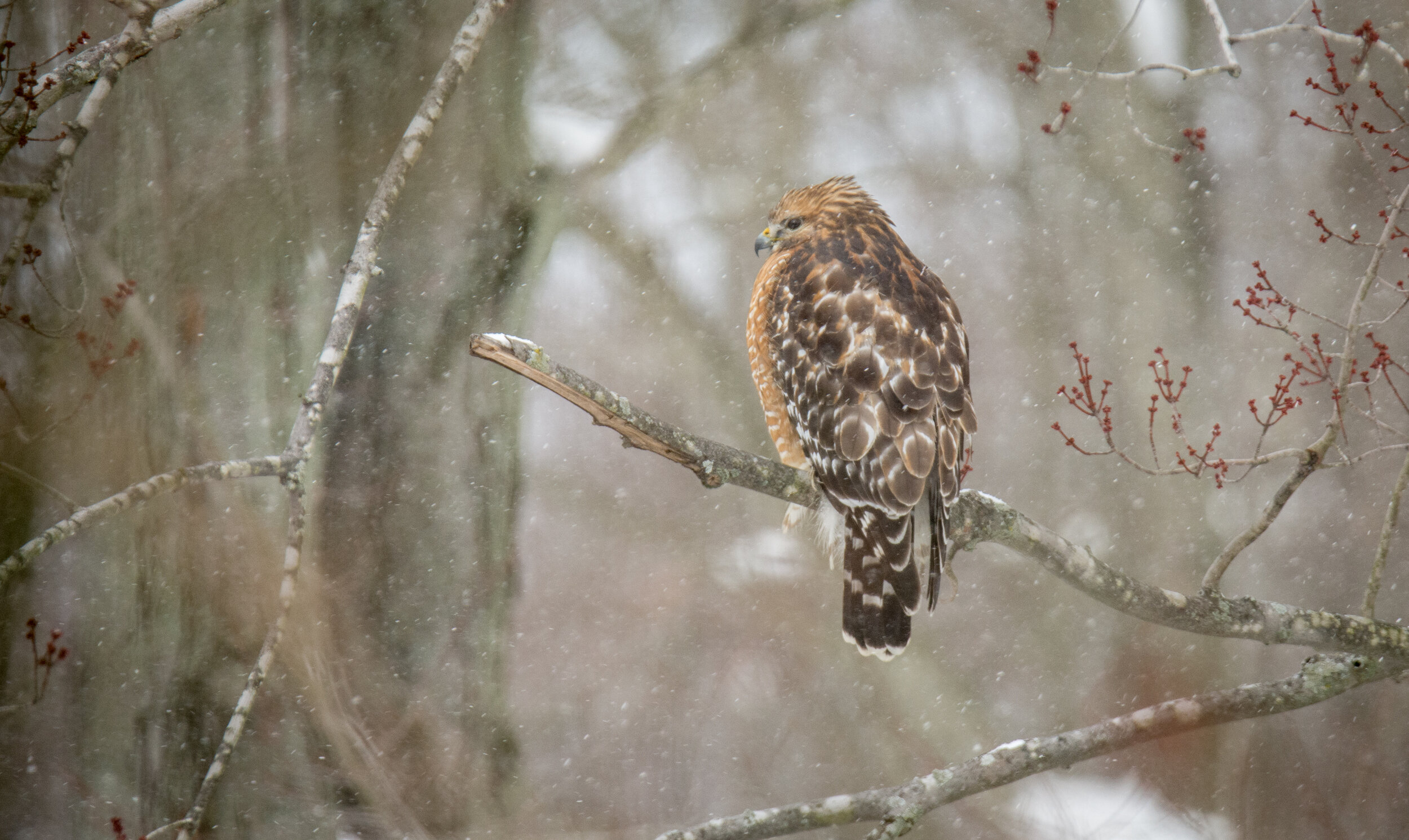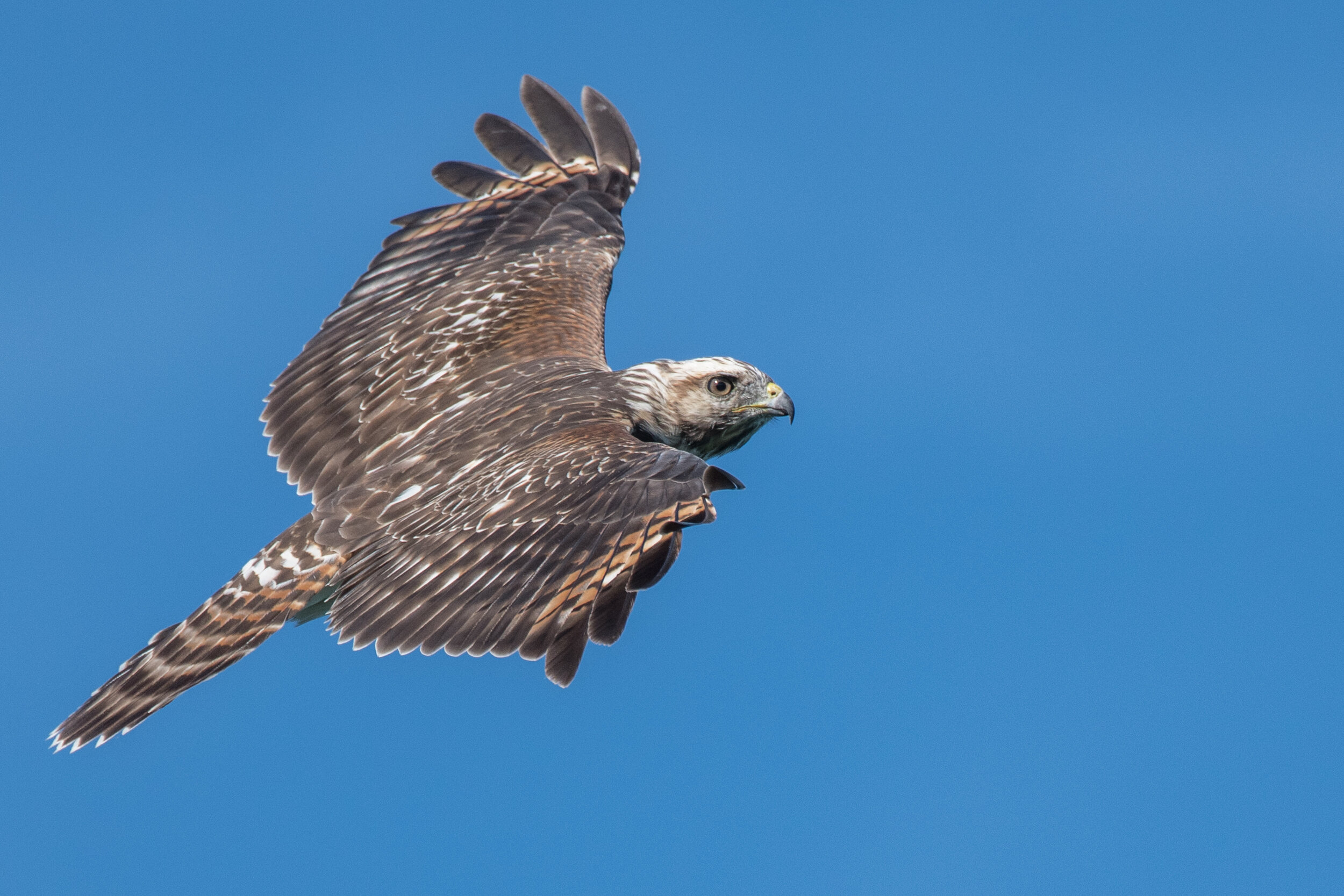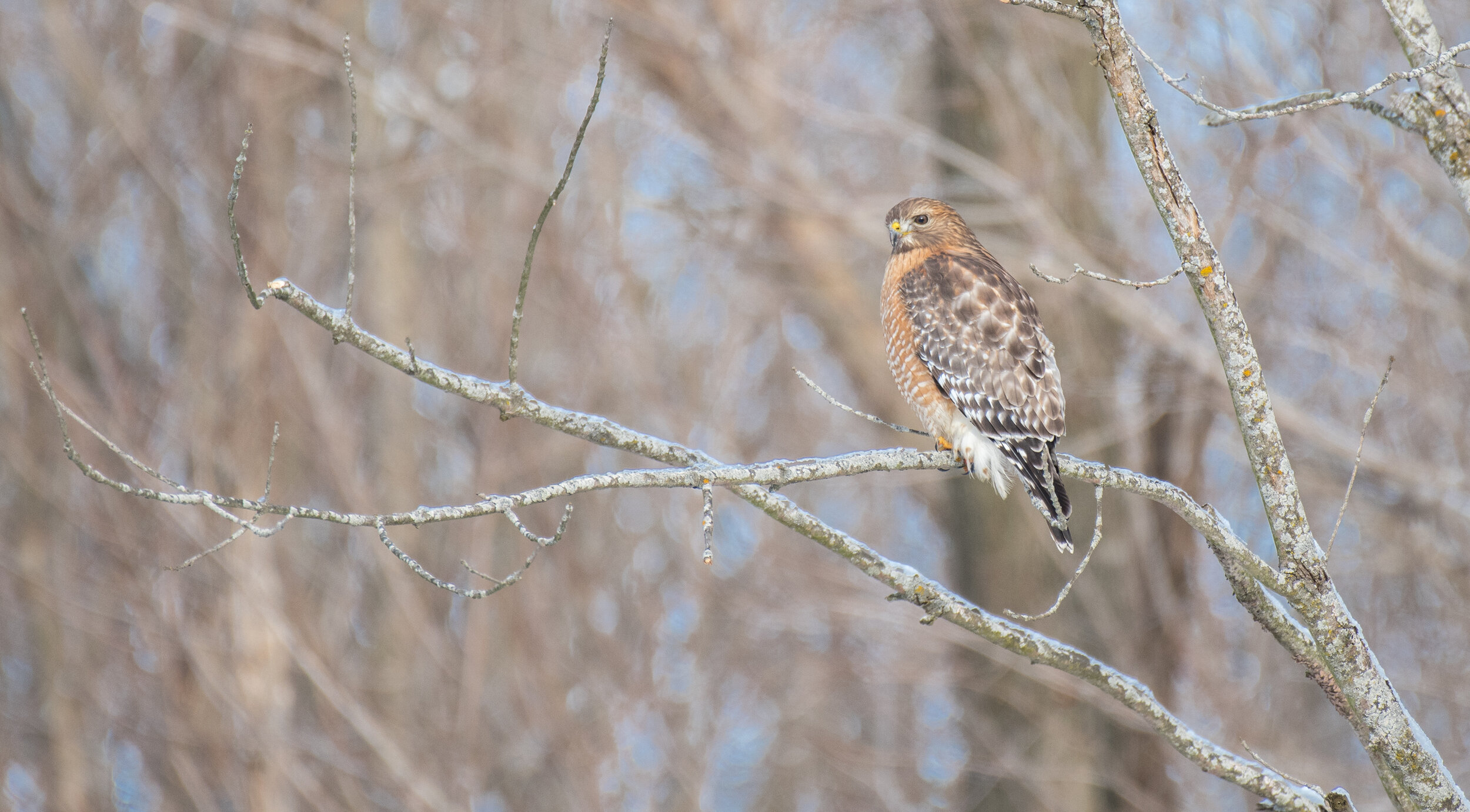Dan's Feathursday Feature: Red-shouldered Hawk
I like accipiters. The name refers to a group of hawks distinguished by their long tail, relatively short rounded wings, and preference for dense woodland habitat where they can display some amazing aerial acrobatics in very tight quarters. When I first started birding, it was a big leap forward to be able to distinguish a Cooper’s Hawk (an accipiter) from a Red-tailed Hawk (not an accipiter) by their overall shape, posture and mannerisms. Then along came the Red-shouldered Hawk.
On a business trip to Florida, with a few hours to kill, I headed to a well-known birding hotspot near my hotel. As I sat trying to photograph the ibises and herons in the reeds all around me, a hawk flew low over my head and came to rest in a low tree about a hundred feet away. I had a great look at it, as it sat there for more than ten minutes, enduring the haranguing of an irate Loggerhead Shrike. Reddish barring on its chest—exactly as I’d seen on the Cooper’s Hawks near home. Slender body, with relatively long tail—again, like the Cooper’s Hawks I knew and loved. Flew in low, and landed low in a tree. It checked all the boxes. If it looks like a Cooper’s Hawk, and acts like a Cooper’s Hawk, it must be a Cooper’s Hawk.
When your bird ID tool box only holds a few tools, it’s amazing how you can make every bird fit somehow into the two or three that you think you know. Sure, I noticed that the tail was not as strikingly long as Chicago’s Cooper’s Hawks. And overall, the bird seemed a bit more stocky. But this was Florida, where people can’t drive and everything looks different. It must be a Florida Cooper’s Hawk, I reasoned.
When the hawk finally had enough of the raucous shrike and flew off, I turned around to be surprised by a group of birders who had silently gathered behind me to observe the hawk/shrike drama. The leader slapped me on the back, “Wow, what an awesome view you had of the shrike pestering that Red-shouldered.” I thanked her with a quiet nod, and quickly edited my field notes: Cooper’s Red-Shouldered.
I’ve seen many Red-shouldered Hawks since that day, and I’ve become better at identifying them. I’ve forgiven myself for mistaking that first Red-shouldered Hawk for a Cooper’s Hawk. After all, here’s what one hawk ID guide says about the Red-shouldered Hawk: “It thinks it’s an accipiter. General appearance is that of a buteo trying to mimic an accipiter.” (Buteo is the group of hawks best represented by the common Red-tailed Hawk.) In other words, the Red-shouldered Hawk seems to want to make you think it’s an accipiter. It often succeeds.
The Red-shouldered Hawk has become my favorite accipiter-looking non-accipiter. It’s hard to beat the sight of a raptor with a wingspan of a meter coursing through a dense hardwood forest in search of small mammals, snakes, reptiles. Not a stranger to soaring, it can often be seen enjoying a cruise in the open skies, too, but I like to find the Red-shouldered Hawk in the wooded lowlands, where it will sit patiently on a low branch, waiting for some critter to be foolish enough to move and give away its position.
Last March I found a nesting pair of Red-shouldered Hawks, doing exactly as the books said they would. They were carrying bits of moss to line their nest, which was three quarters of the way up a large white oak, in a crotch of the trunk. The books also say that the pair will return to the same nest year after year, sprucing it up with fresh moss each spring. I plan to visit that nest every year, to say hello, and to call their bluff when they try to fool me into writing Cooper’s in my field notes.
Dan's Feathursday Feature is a regular contribution to the COS blog featuring the thoughts, insights and pictures of Chicago birder, Dan Lory on birds of the Chicago region.





